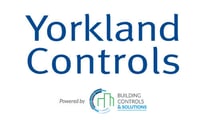Considerations for sensor wiring to automation controllers.
All ways refer to the manufacture literature first before running wire, power or terminating sensors.
Wiring between sensors and temperature/humidity controllers does not normally require shielding. If wiring is to be routed through electrically noisy environments, such as motor control centers, relay panels, or lighting panel boards, it may be necessary to use shielded cable to minimize the effects of transient voltages and other sources of electromagnetic interference.
Sensor wiring to controllers may be run in the same conduit as low voltage AC power as long as the power consumption is continuous. Transient voltages generated during power switching may be induced into sensor wiring causing upsets or failures in the connected components. Since transients are generally caused by inductive loads, sensor wiring should not be combined with any relay or motor control circuit which are frequently interrupted, nor with frequently switched lighting loads.
Active sensors ( sensors that require power, such as pressure, and humidity) require AC or DC power. Many automation controllers provide the power to active sensors from one of the controller terminals.
- Do do not share this power with more than one sensor.
- Observe polarity
- If external power is required, do to share the same power with the controller's power source. Use a separate transformer or isolation transformer to power the active sensors.
Recommended wiring practices with controllers include:
- Separate conduit is required for sensors where line voltage switched power is present.
- Separate conduit is generally necessary when switched loads of 50 VA or more are present.
- Generally, separate conduit is needed when sensor wiring and AC power wiring exceed 300 ft. (91 m) to avoid AC pickup, which may disrupt proper controller operation.
- Maintain as much physical separation as possible where AC power and sensor wiring exist in a common panel.
- Use shielded cable for sensor leads if items 1 through 4 cannot be followed. Trim back shield at sensor and tape to prevent grounding. See appropriate manufacturers' controller technical bulletin for proper shield termination techniques.
